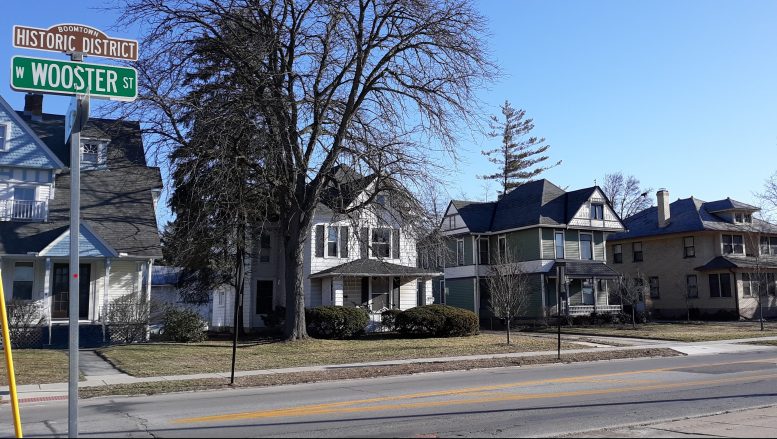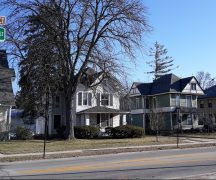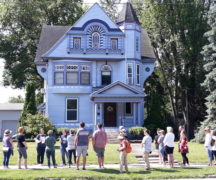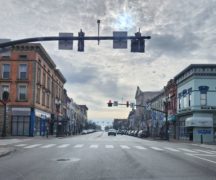By JAN LARSON McLAUGHLIN
BG Independent News
Bowling Green has a lot of history hammered into the architecture throughout the city.
Some history goes back centuries, like the sturdy stone homes built with rock from nearby quarries. Some are grand and ornate, like the homes along West Wooster Street built with profits from the oil boom. And some are plain and unpretentious, like the homes put up near the former Heinz catsup plant for company employees.
The city’s historic preservation commission wants to protect significant structures for future generations. And now that the state has granted its approval for Bowling Green to develop a plan for historic preservation, the question is – what’s next?
The commission members – Les Barber, Chris Mowen, John Sampen and Wil Roudebush – met last week to discuss their next steps.
Should the historic preservation commission members work on identifying possible historic districts? Should they focus on getting plum buildings – like the county courthouse – on board? Or should they work on engaging the public to get community support?
The goal of the historic preservation plan is to help the city retain historically significant structures. It is hoped the ordinance will slow the cultural decline experienced in the older housing stock in the last few decades.
Some historic homes are losing the battle against time and rental transformation. The plan would require property owners in designated historic districts to meet standards when making substantive changes to the exterior of buildings. There would be no rules for the interior of structures.
There are currently 78 cities in Ohio with historic preservation ordinances – including every other university community in the state.
The long-range goal is to revitalize the city.
The Bowling Green commission agreed that its next step would be to start identifying possible “districts” that could qualify for historic preservation efforts. To do that, an inventory should be made of historic structures, “so we know what we have,” Mowen said.
The commission members discussed identifying different “eras” of buildings in the city, such as the Boomtown homes west of the downtown, possible “industrial era” homes on the east side, and “settlement era” buildings.
Some of the structures may be identified by their similar architectural characteristics and common building materials.
Areas like the residences built for Heinz workers are not mansions, but they are historically significant, Sampen said.
“They are interesting because of what they represent,” he said.
In some cases, individual homes may become part of the historic preservation plan. The city still has a few of the original houses built of stone from the nearby lime quarry. And there is at least one early home that still houses descendents of the original homestead family, according to Heather Sayler, director of the city’s planning department.
“It’s things like that that I think are interesting,” Sayler said.
The commission, however, is keenly aware that any historic preservation efforts must first get buy-in from the community.
“How do we involve the community, so we can convince the community that this is important?” Sampen said.
Any type of public engagement plan must explain the purpose of historic preservation efforts, they agreed.
“Our mission is to preserve our history,” Mowen said.
“People want to know if they are going to be affected,” she said.
The creation of historic preservation districts must be approved by the majority of the property owners in the districts.
If the benefits are explained to homeowners, then they may express their support, Barber said.
“That would be a real incentive for the naysayers to think twice about opposing it – at least publicly,” Barber said.
The commission also discussed the need to complete the process for including historic landmarks, like the county courthouse, old county jail, and Needle Hall in City Park. They also talked about meeting with BGSU President Rodney Rogers about how the university can be involved in the preservation efforts.
To include youth in the efforts to celebrate the city’s history and educate the community, Sayler suggested working with the library to create interactive booklets for children. The booklets would include activities, including walking tours of the city.
“We want to make people proud of Bowling Green as part of the education process,” Sayler said.





